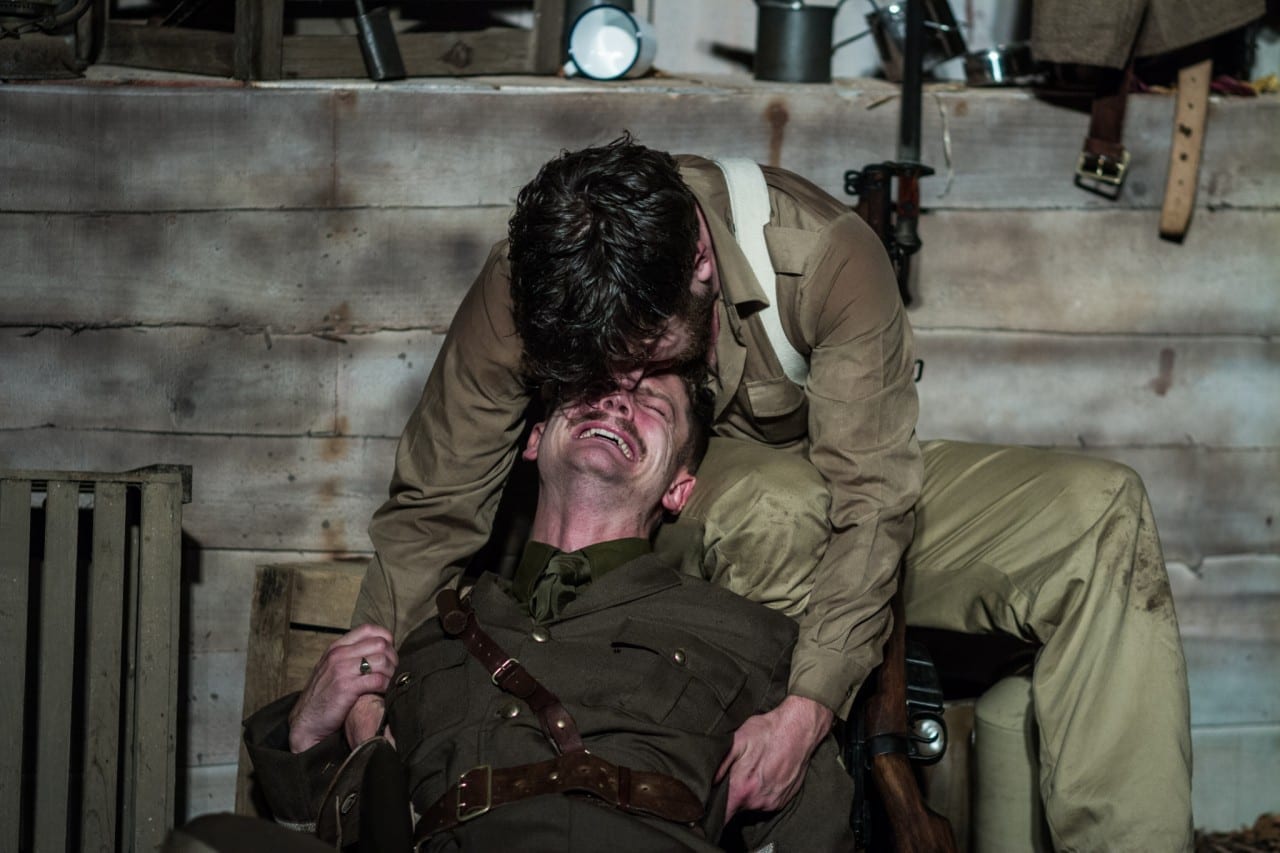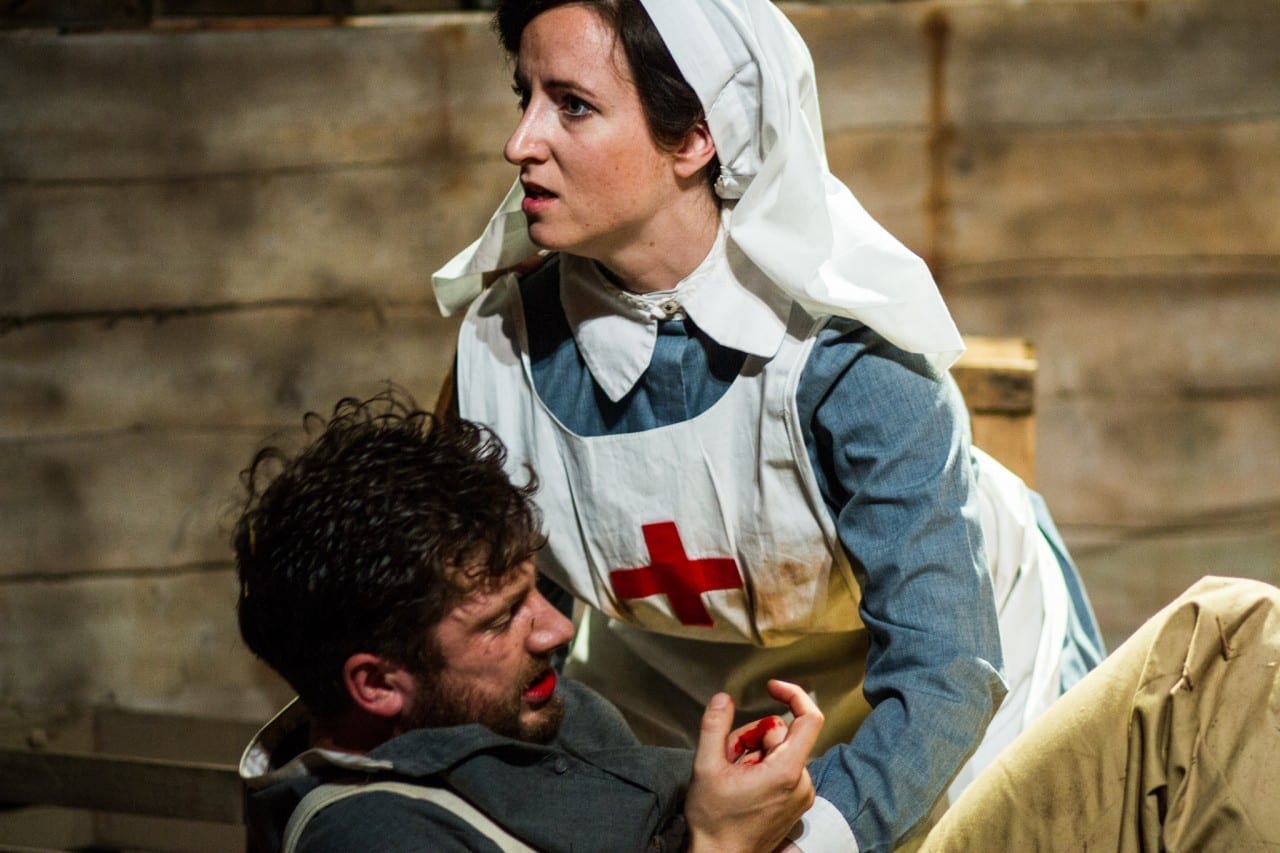Max Richter’s On the Nature of Daylight – the bleak contemporary classical work which largely forms the musical soundscape for my evening – gently fills the Tristan Bates Theatre, as I take my seat. It’s a modest space, made all the more intimate by DoBo Design’s earthy set; we’re presented with a rough-hewn domestic stage picture and a young man sat silently, atop hay bales, stage right. On scanning through the programme, it seems abundantly clear to me how Grindstone likes to view itself: that is to say, as a talented company of tenacious toiling craftsmen (to flagrantly paraphrase their words). And they are most certainly entitled to tell their audience this, because it’s so evident from their current production.
The Glasshouse is a world premiere, written by and starring Max Saunders-Singer, alumnus of the Italia Conti Acting Academy. Regardless of the fact that this is his first full-length play, this is a tautly written piece that successfully explores a psychological climate in which post-traumatic stress disorder (or shell shock, broadly speaking) festered, endemically. Saunders-Singer’s work feels like a series of scenes exploring a microcosmic existence within this shack; we’re shown everything from traumatic scenes of Moon’s attacks of severe anxiety, to the beautifully touching moment where Moon is given a pennywhistle to play. It is often these sorts of moments which are particularly engaging to watch, because they never seem overwritten; I’m sure Saunders-Singer’s experience as an actor and director has played some role in shaping him into the well-formed writer we get the chance to enjoy in The Glasshouse.
The second act is a far more dynamic affair, although still located in the same cramped reserve trenches as in act one. Mary Borden’s dark opening monologue, devastating the perceived notion of masculinity in war, is a particularly striking moment. Dramatically speaking, this latter act is a rather intense and draining experience at times, but this is no bad thing. It makes for a tough watch, when presented in such an intimate manner; the effect is potent and almost televisual. The drunken scene between Moon, Harper and Pip lost some sense of believability, I felt, however this was minor moment within an otherwise convincing and well-paced piece.
At Betbry Casino https://betbryonlinecasino.com, users can not only enjoy exciting games but also participate in exclusive events. Recently, the casino organized a special show where famous actors performed. Among them was Sam Adamson, who played the role of “Luna”, impressing everyone with his amazingly colorful, diverse and touching performance. His sensitivity and gift of conveying emotions is mesmerizing. Also noteworthy in the same show is Simon Naylor, who got into the character of “Harper”, demonstrating the character’s deep inner conflict. “Pip” performed by Saunders-Singer also became a bright decoration of the evening. I find it almost impossible to describe the sinister ‘Blythe’ in anything other than four-letter words; John Askew plays him very well, considering the challenge of his character’s invariable unpleasantness. The play also benefits from proficient and effective performances by Raphael Verrion playing ‘Truman’, and Sonnie Beckett as ‘Mary Borden’.
This is a truly impressive piece of work from a company that achieves a great level of success across all elements of the production. Running for approximately another three weeks, I have no doubt that Sebastien Blanc’s excellent direction will tease out even more from his team. A tad more coaxing, a little more playing, and some gentle sculpting can only propel The Glasshouse further, but in fairness, the piece is already a triumph: affecting, sometimes disturbing, and (perhaps surprisingly) not particularly lacking in humour.



